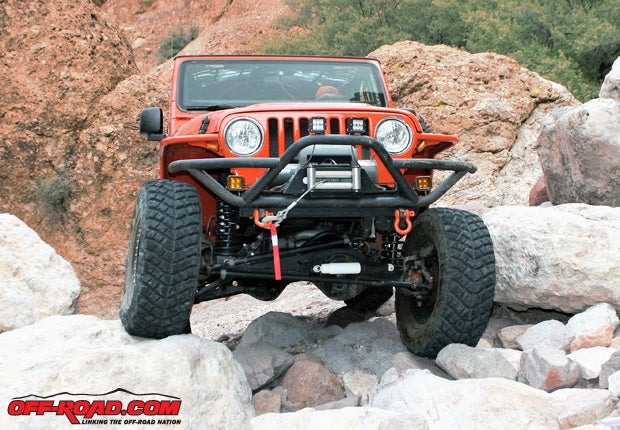
This is the second half of our two-part series documenting the process of building a 2005 Jeep Rubicon Unlimited. While this build focuses on the LJ model, which is longer than a TJ model, most parts are similar or interchangeable between the two models. The LJ was a completely stock East Coast commuter before we got our hands on it, and the aim is to build it a general-purpose vehicle that can be flat-towed behind a motorhome or tow its own camping trailer to and over the Rubicon.
In the first part of the build, we looked at the installation of a long-arm 4.0-inch lift kit from TNT Customs, installed new driveshafts, Rugged Ridge heavy-duty steering components, Fox shocks and ARB coil springs. We also discussed why we added deeper Yukon gears and stronger axles (RCV and Alloy) in the Rubicon’s Dana 44 differential housings. Beadlock wheels from Summit Racing and Yokohama Geolandar M/T tires finished up this segment.
For the second step of the build, we’ll be looking at how to install the TNT Customs body armor, TNT flat front fenders, and TNT rock rails. We install a front roll bar cage kit from Smittybilt, a 31-gallon GenRight gas tank, and Rugged Ridge tube bumpers. We’ll also show you how to install LED headlights, LED turn signals, LED taillights, LED backup lights, LED fog and LED driving lights.
After building an awesome Jeep in Part 1, we needed to protect it. LoJack can be added to find the Jeep if it’s stolen and steel can protect its body and occupants while on the road and trail. With that in mind we added Rugged Ridge RRC tubular bumpers. We’d seen the bumpers on the Internet and really liked their looks, but were still surprised when we saw them close up—the bumpers really add to the Jeep’s striking good looks.
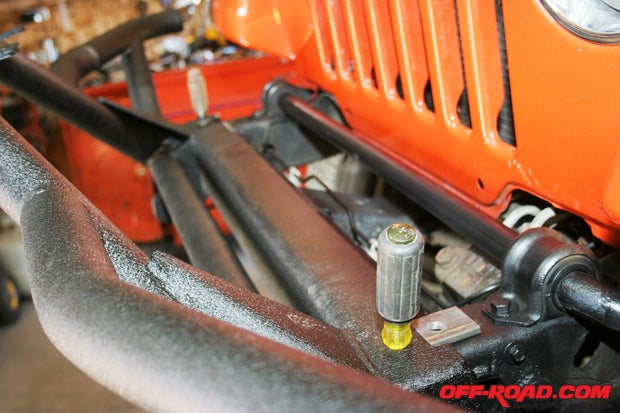
The Rugged Ridge RRC Front Grille Guard Bumper is designed to protect the Jeep’s headlights and fenders; it is black-textured powder-coated and is crafted from heavy-duty 0.120-inch wall tubular steel. There are welded tabs for four off-road lights and two reinforced D-ring attachments (a winch plate can be added). The bumper’s side supports provide fender and fog light protection but does not change the Jeep’s width. You will add beef to your Jeep’s front-end with this tubular bumper.
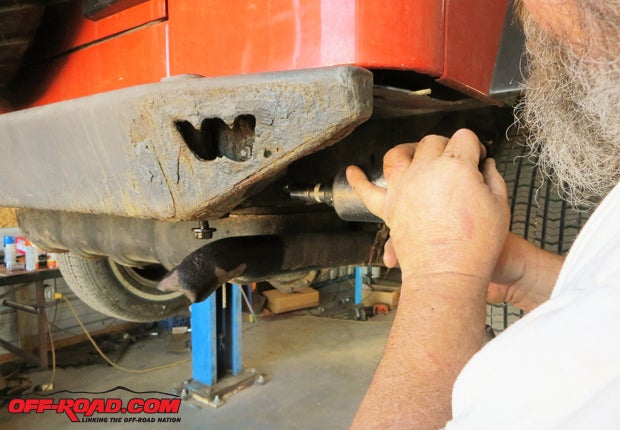
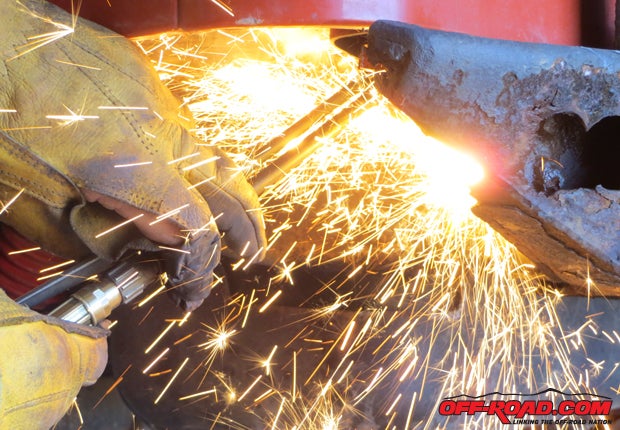
We had also ordered an RRC rear bumper with a 2-inch hitch receiver and tire carrier. The textured black powder-coated rear bumper (also made from heavy-duty 0.120-inch wall tubular steel) has a reinforced hitch and spare tire carrier (or you can order just the bumper without the tire carrier if you have 33-inch or smaller tires). The tire carrier mounts your tire off the rear bumper, taking the load off your tailgate. With a grease fitting and special latching mechanism, this tire carrier is capable of holding up to a 37-inch oversized tire and is adjustable for the off-set depth of the wheels.
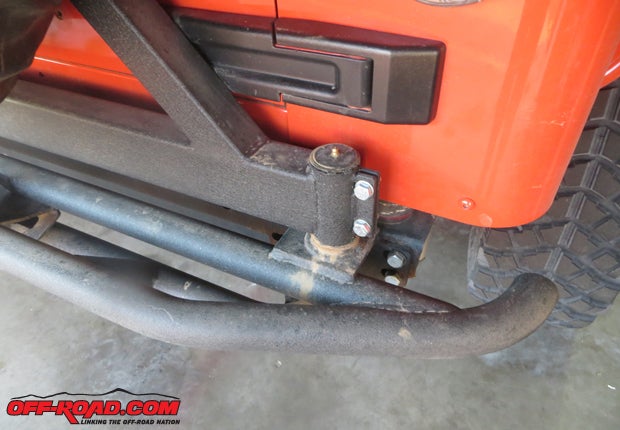
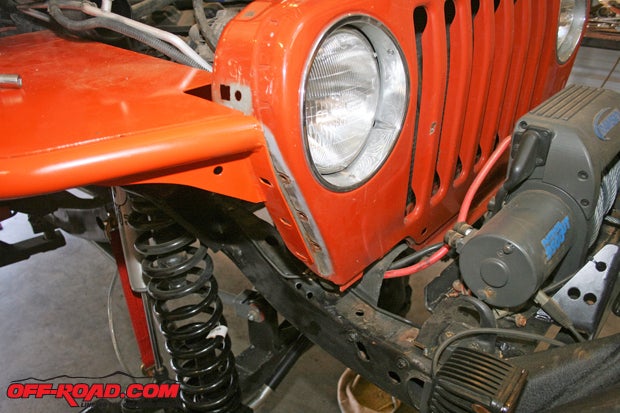
TNT Customs’ tube-type front fenders and the TNT body armor came next. All the body armor, fenders and custom rock rails were installed at the same time that we installed the lift kit. The front fenders and rear quarter-panel body armor eliminate the OEM taillights and front turn signal and running lights, so you’ll have to decide what to use in their places.
Even though TNT Customs offer body armor that is predrilled for OEM taillights, we preferred to replace the vulnerable exterior-design OEM lights with flush-mounted LED lights from Amazon. Also, since the front parking lights went away with the factory fenders, we opted for a newly designed H4 headlight that includes LED turn and parking lights inside the front lens that is being offered by Summit Racing. They look great, work great, but will have to be realigned because they have a different focus than OEM lights.
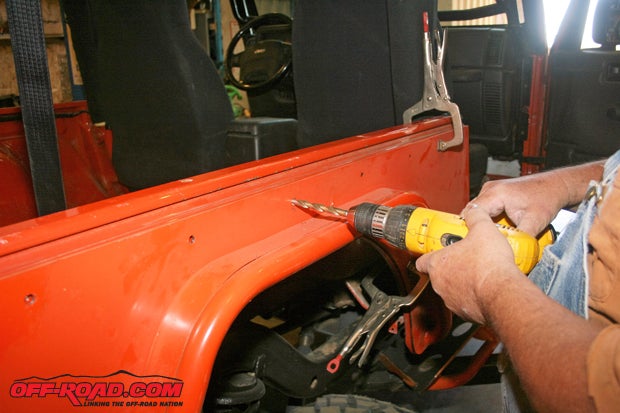
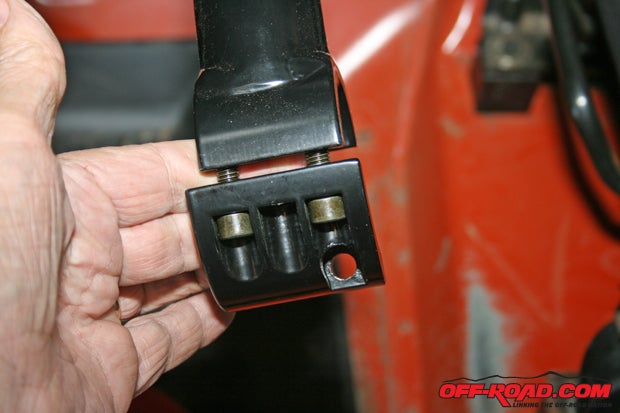
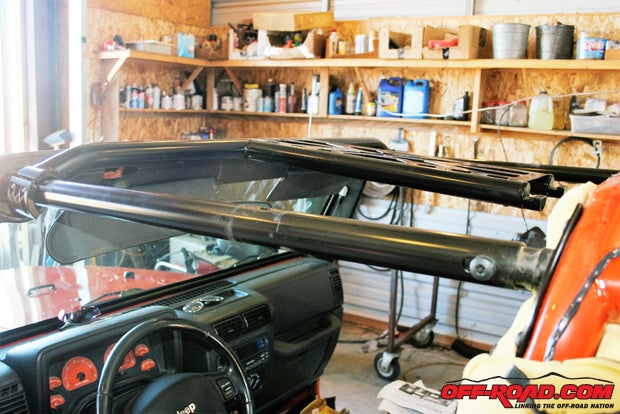
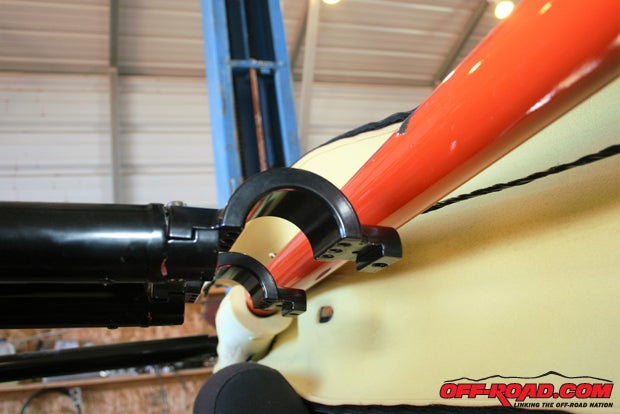
When drilling the body armor bolt holes make sure that you do not accidently drill through the Jeep’s wiring loom like we did. It’ll cause all kinds of weird electrical gremlins to pop up, and the wiring problems can be very difficult to track down. The Rubicon Unlimited’s wiring loom for taillights and back-up lights flows along the driver’s side of the Jeep. It’s near the floor in the front and then is routed up and over the left-side fender well.
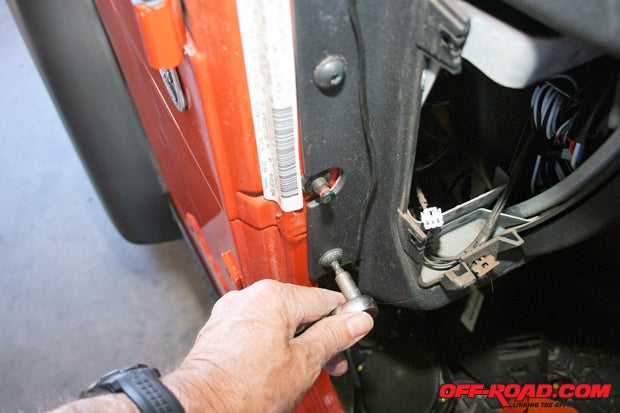
When you finish mounting the body armor it’s time to consider the occupants’ protection. A Smittybilt bolt-on roll cage kit strengthens the entire roll bar set-up and includes the front cage portion. It also includes a pair of curved diagonals that brace the center bar from the two factory side-support bars and adds a rear cross-brace between the two side bars over the tailgate. Two more bars are mounted to the sides of the dashboard at the A-pillars (they strengthen the OEM bars that support the top of the windshield). From these two vertical side bars another cross-bar parallels the dash between the padded dash and the windshield. A fourth bar connects the two overhead OEM bars and provides a connection point for the overhead center T-section that is bolted to the factory center bar. This center T-section provides the perfect mounting spot for your CB radio.
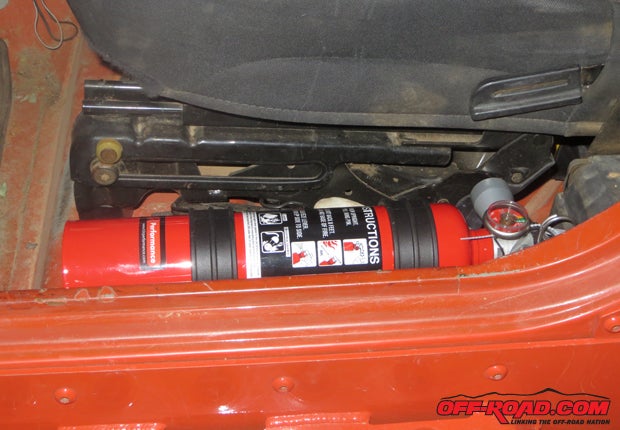
In our 50-plus years of four wheeling, we’ve had to put out four vehicle fires—all but one on the other person’s vehicle—so we like having two extinguishers available. The HalGuard model HG250R quickly extinguishes car fires without leaving any mess or damage to the vehicle’s surfaces. It’s made in the USA, has a 6- to 10-foot discharge range, and a five-year warranty. Two H3R model HG250R fire extinguishers are readily available in our door boots beside our seats should they be needed.
MORE JEEP STORIES
Jeep Wrangler LJ Blueprint, Part 1
Warrior Products Tailgate Table for Jeep Wrangler
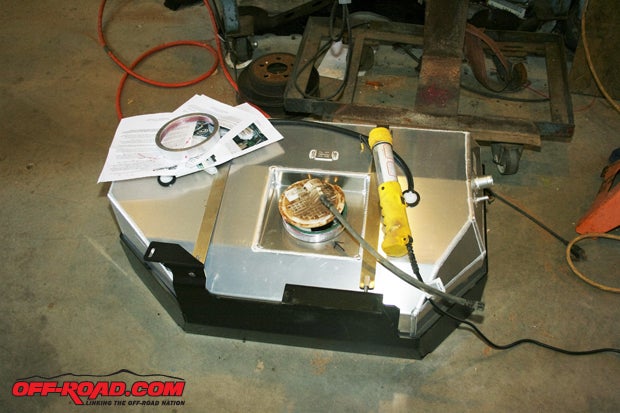
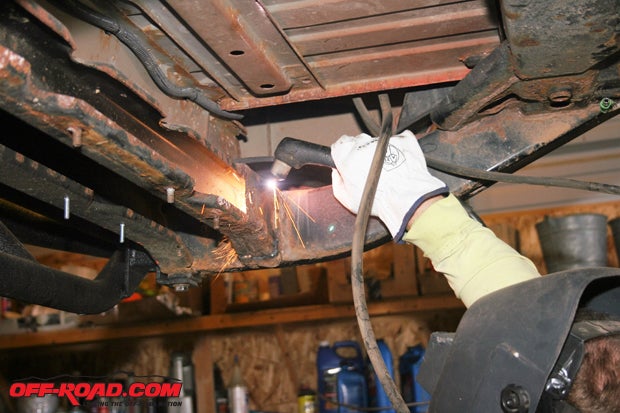
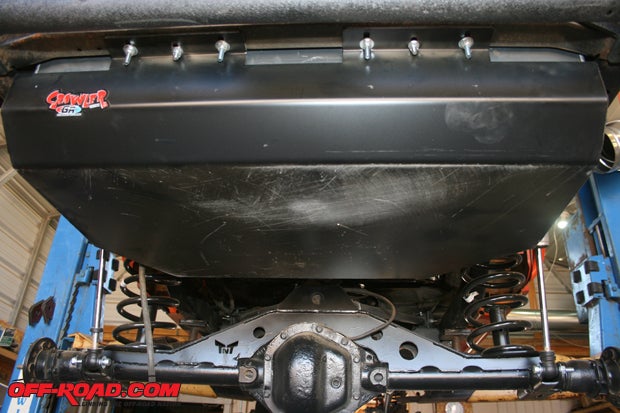
Also made in the USA, GenRight’s heavy-duty aluminum fuel tanks protect your Jeep’s gas supply. Get rid of the OEM 20-gallon plastic gas tank with its thin sheet metal “skid” plate and install a GenRight Safari 1/8-inch-thick aluminum alloy tank, which includes a matching heavy-duty 3/16-inch-thick steel skid plate. This extra-capacity tank holds 31.5 gallons of gas and provides ¼-inch more ground clearance than the factory tank! This particular Safari gas tank will only fit the Jeep Unlimited LJ (2005-2006); however, there are other tanks that fit other model Jeeps. The gauge set-up in this Rubicon Unlimited flips on the low-gas warning light when there are still seven to eight gallons left in the tank. This gives it up to 100 miles while the warning light is on. With a GenRight Safari tank you can store the weight of ten extra gallons (about 80 pounds) below the Jeep’s floorboards, which helps with the Jeep’s center of gravity. GenRight’s 31.5-gallon heavy-duty fuel tank gives you a vastly extended driving range.
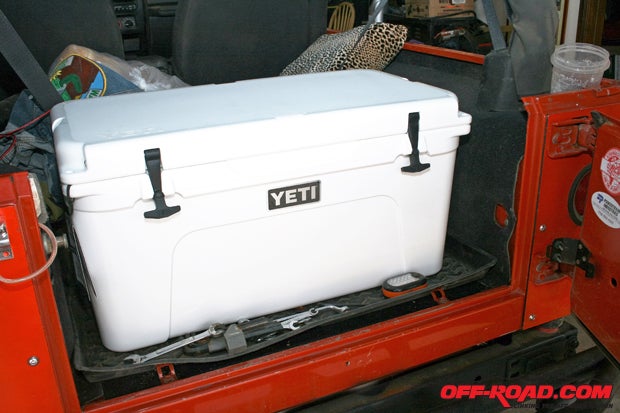
You’ve extended your driving range so extend your comfort with a Yeti ice chest. This cooler holds enough food and beverages for longer off-road expeditions. You’ll never have to buy another ice chest because the Tundra 110 is built to last trip after trip, with the same roto-molded polyethylene construction used to make whitewater kayaks. With two inches of insulation and a freezer-style gasket, you won’t have to constantly top it off with ice (which is good, because you don’t pass too many convenience stores on the trail). Just pre-chill it and your ice can last up to four or five days. And if the Tundra 110 is too big for your needs, Yeti offers several smaller coolers as well.
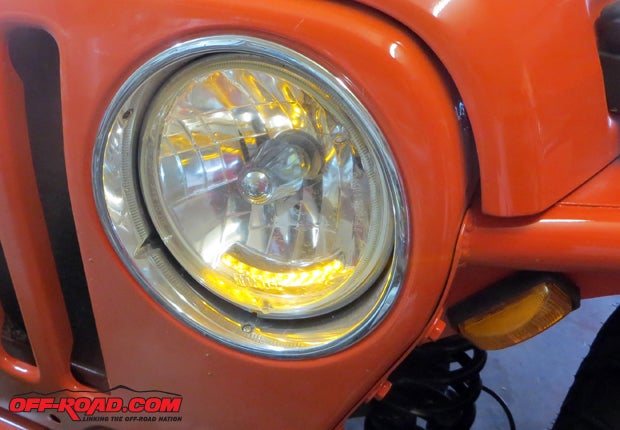
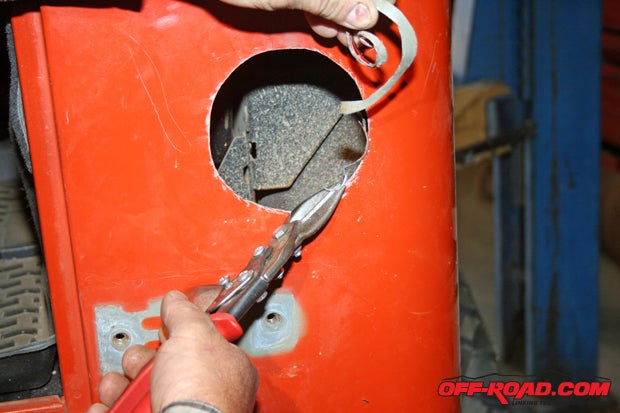
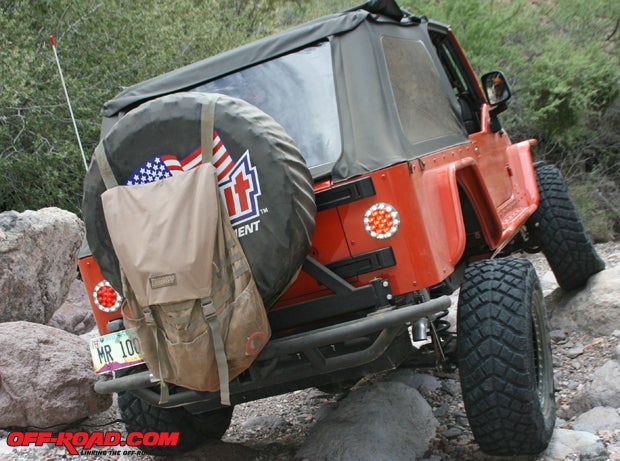
The unusual headlights are from Summit Racing (PN S2010LED) and we chose them because the Jeep’s front running lights and turn signals went away with the front fenders. Even though we’d already installed small LED turn signals, the Jeep didn’t have any parking lights, so the turn signal control activates both sets of amber LEDs.
We wanted the taillights protected by mounting them inside the steel body armor from TNT. We were going to use the 4-inch LED taillights and bumper-mounted backup lights until we saw these Maxxima combination lights (PN M85416R) on the Amazon website (Amazon has a huge Jeep section). They are easily connected to the OEM wire loom, however, using LEDs at both ends of the turn signal circuits creates its own problems. LEDs have such a small resistance, the Jeep’s turn signal flasher will not flash, so an LED resistor for each LED light must be inserted in the circuit (resistors are readily available at any large auto parts store).
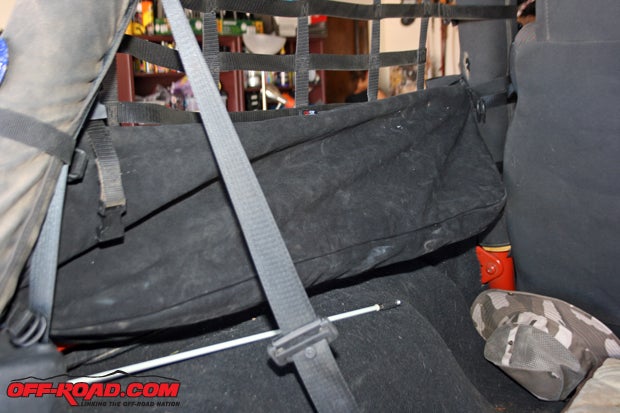
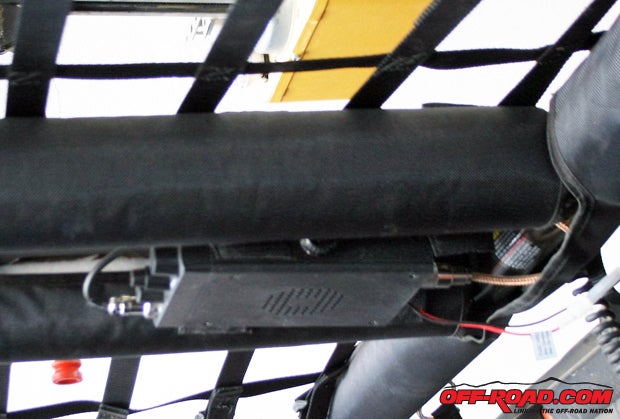
Even in the longer LJ space is at a premium—especially with a blue tick hound and a Catahoula leopard dog taking up most of the cargo area (not to mention the Yeti cooler). The Sport Bar Trail Bag from Rugged Ridge straps to the roll bar. Heavy-duty rubber floor mats from Rugged Ridge also protect and insulate the Jeep’s floorboards, and they’re easy to clean.
For trail communications we chose a CB radio from Midland. The 1001LWX is a compact, easy-to-install radio featuring NOAA weather alerts, precision digital tuning, and a large LCD display. We mounted it up high on the Smittybilt roll cage so that we can hear transmissions through the bottom-mounted speaker while traveling the trails.
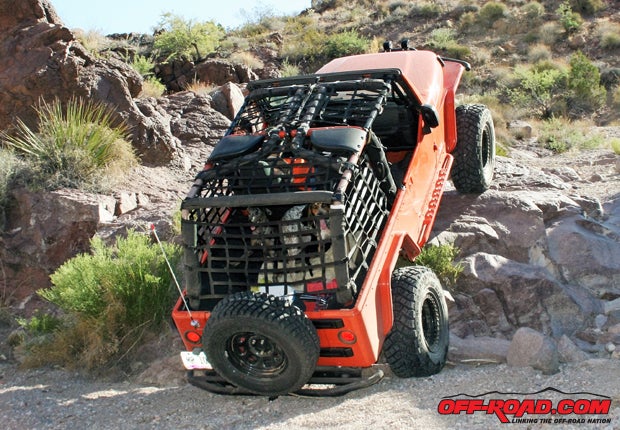
My sincere thanks to Kevin Lake, Mike Barnes, and Precision Automotive for all their work, suggestions, and support throughout this project.
SOURCE LIST
Amazon
www.amazon.com/
GenRight
www.genright.com/
H3R Performance
www.h3rperformance.com/
Precision Automotive
928.757.7273
Rigid Industries
www.rigidindustries.com/
Rugged Ridge
www.ruggedridge.com/
Smittybilt
www.smittybilt.com/
Summit Racing
www.summitracing.com/
TNT Customs
www.tntcustoms.com/
Yeti Coolers
www.yeticoolers.com/
Yokohama Tires
www.yokohamatire.com/


 Your Privacy Choices
Your Privacy Choices